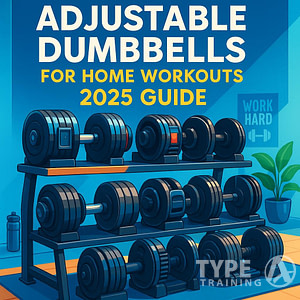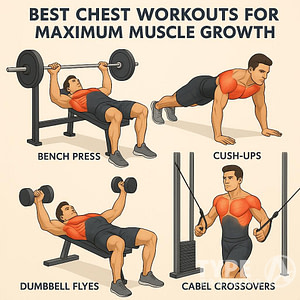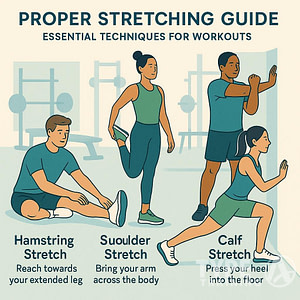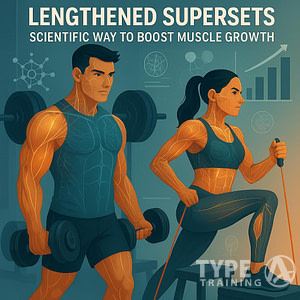As you reach your 40s, you might start thinking more about living a longer, healthier life. For me, becoming a dad at 40 sparked an interest in understanding how to improve my longevity. I’ve spent considerable time researching, reading, and testing, even looking into the habits of some of the world’s oldest people. Based on what I’ve learned, I’ve identified five key exercises that may significantly increase the chances of living to 100.
Incorporating the right senior fitness guide can make a significant difference in your longevity journey.
These exercises include Zone 2 cardio, high-intensity interval training (HIIT), strength training, mobility training, and plyometric exercises. Each of these focuses on different aspects of physical fitness, from endurance and heart health to muscle and flexibility.
These important Exercises to Help You Live to 100 focus on enhancing your overall well-being and longevity.
Popular posts:
By incorporating these exercises into your routine, you can improve both your lifespan and health span. This can help you live not just longer but better.
Key Takeaways
Through consistent Exercises to Help You Live to 100, you can enhance your quality of life significantly.
Exercises to Help You Live to 100
Consider adding these Exercises to Help You Live to 100 into your fitness plan for optimal results.
- Combining various exercises can improve longevity.
- Strength and endurance training are crucial as you age.
- Consistency in exercise maintains overall health.
Importance of Longevity and Exercise
To achieve a longer life, the Exercises to Help You Live to 100 are crucial for maintaining health.
Exercise plays a crucial role in extending life and improving the quality of those extra years we gain. Regular physical activity not only helps us stay fit but also boosts our mental well-being and enhances our mood. Additionally, it reduces the risk of chronic diseases, making it an essential component of a healthy lifestyle.
Engaging in these Exercises to Help You Live to 100 can significantly enhance your mental well-being.
As a dad in my 50s, I’ve taken a deep dive into the benefits of various workouts that can help us live longer and feel better. From strength training to cardio, I’ve explored how different forms of exercise contribute to a healthier lifestyle and ultimately lead to a more fulfilling life as we age.
Many Exercises to Help You Live to 100 are enjoyable and can be tailored to your preferences.
Zone 2 Cardio
Zone 2 cardio is a foundational exercise, especially for building endurance. This type of cardio allows you to engage in activities like walking or cycling at a pace where you can still hold a conversation. It targets a heart rate range, making it sustainable over long periods. Many long-lived individuals incorporate Zone 2 cardio into their routine.
Zone 2 cardio is one of the top Exercises to Help You Live to 100 and should be a staple in your routine.
High-Intensity Interval Training (HIIT)
High-Intensity Interval Training (HIIT) aims to improve VO2 max, which has a direct link to longevity. The 4×4 Norwegian method is an effective technique here, involving cycles of 4 minutes at high intensity followed by 3 minutes of rest. It’s intense but worth it. HIIT can extend your heart’s youth by years, as proven by studies.
Integrating HIIT into your workout routine is among the most effective Exercises to Help You Live to 100.
Strength Training
Strength training is essential for maintaining healthspan, which is the quality of life as you age. As we grow older, we naturally lose muscle mass. Resistance training helps counter this loss, keeping you functional and independent. Focus on basic movements like squats, lunges, and overhead presses to build and preserve muscle.
Strength training as an essential component of the Exercises to Help You Live to 100 is well documented.
Mobility Training
Flexibility and mobility decrease with age, especially if your lifestyle is sedentary. Consistent mobility exercises can help maintain and improve your range of motion. Simple daily routines, even just 5-6 minutes before workouts, can make a big difference.
Many people have found that incorporating mobility training into their regimen contributes to the Exercises to Help You Live to 100.
Plyometric Exercises
Power decreases faster than muscle mass as you age, affecting speed, balance, and agility. Plyometric exercises like jump rope or box jumps can help maintain power and keep you agile. Adding a few reps of plyometric exercises before workouts can activate your nervous system effectively.
Plyometric exercises are powerful Exercises to Help You Live to 100 that enhance agility and balance.
Zone 2 Cardio
What It Is and Why It Matters
Zone 2 cardio is a type of aerobic exercise. It’s done at a steady pace that you can keep up for a long time without feeling wiped out. You should be able to chat comfortably while doing it. This kind of workout boosts your heart and lung health, which might help you live longer.
Incorporating Zone 2 cardio is among the best Exercises to Help You Live to 100 you can do for your heart health.
Applying the Math Method
The Math Method (MF) is one way to manage this kind of exercise. It helps keep your heart rate within the right range. To figure out your target heart rate, use 180 minus your age as a guide. This method ensures you stay in the optimal zone for building endurance and improving your VO2 Max.
Practical Daily Uses
You can do Zone 2 cardio in many ways. Walking, jogging, or biking all count as Zone 2 if you keep the right pace. For example, walking 2 to 3 miles every day is a great habit that many people who live to 100 have. Using tools like treadmills can also make it easier to stick to your routine, especially during bad weather.
Using tools for Zone 2 cardio can further optimize these Exercises to Help You Live to 100 in your routine.
High-Intensity Interval Training (HIIT)
Improving VO2 Max
VO2 Max is a key measure of your cardiovascular fitness. High-Intensity Interval Training (HIIT) helps boost this metric by pushing your heart to its limits. This kind of exercise involves short bursts of intense activity followed by rest periods.
HIIT is one of the Exercises to Help You Live to 100 that can yield significant cardiovascular benefits.
4×4 Norwegian Method
The 4×4 Norwegian Method is an effective way to implement HIIT. Start with a warm-up, then exercise intensely for 4 minutes at 60-75% of your maximum heart rate. Follow this with 3 minutes of low-intensity rest. Repeat this cycle four times.
By following the 4×4 Norwegian method, you can maximize the effectiveness of Exercises to Help You Live to 100.
Adding Sprints
Incorporating sprints into your routine is another way to practice HIIT. Short, all-out runs can help improve your cardiovascular fitness. Sprints require you to run as fast as you can for brief periods, followed by rest.
Strength Training
Retaining Muscle and Enhancing Quality of Life
After 30, people start losing muscle at a rate of 3-8% each decade. This rate increases after turning 60. To stay functional, it’s crucial to focus on resistance training. You don’t have to aim for a bodybuilder look, but you need to do some form of strength training to maintain your muscle.
Incorporating these Exercises to Help You Live to 100 will keep you strong and functional.
Key Movements to Focus On
Your aim should be to get stronger in specific movements rather than just exercises. Key movements include:
- Squats
- Hinges
- Lunges
- Overhead presses
- Horizontal presses
- Pull-ups
- Horizontal back rows
- Carrying exercises (like Farmer’s walks)
Technique for Progressive Improvement
One effective method to get stronger is the progressive overload technique. This involves gradually increasing the weight, repetitions, or intensity of your workouts to challenge your muscles continually.
Progressive overload is key to making these Exercises to Help You Live to 100 effective.
Mobility Training
Maintaining Your Flexibility
As we get older, our ability to move and stay flexible decreases. This decline starts around the age of 30 and gets worse if you don’t stay active. While lifting weights can help improve flexibility, it’s important to include specific mobility exercises in your routine. These exercises help you stay flexible and able to do everyday activities, like bending over to tie your
Maintain your flexibility through the Exercises to Help You Live to 100 that are suitable for your needs.
.
Daily Movement Exercises
To keep your body moving well, it’s essential to do mobility exercises daily. Every morning, you can start with a few simple drills like the world’s greatest stretch or the couch stretch. Before any strength or cardio workout, spend 5 to 6 minutes on mobility drills. This approach keeps your body moving effectively and prepares you for more intense activity. These short routines can make a big difference in how you feel and move each day.
Jump Training Exercises
Keeping Muscle Strength
As you get older, not only do you lose muscle, but you also lose power at a faster rate. Power is essential for speed, balance, and agility. To maintain this, it’s important to include some form of jump training in your routine, especially for your lower body. This helps keep your energy levels up and maintains your edge.
Jump training is one of the dynamic Exercises to Help You Live to 100 that can enhance your overall fitness.
Easy Ways to Start Jump Training
Simple exercises can be very effective. Jump rope and jumping jacks are good starting points. For those looking for more advanced options, try box jumps or long jumps. Start incorporating a few reps of these exercises right before your workouts to activate your nervous system and get ready for a tougher session.
Starting with basic jump training can set the foundation for the Exercises to Help You Live to 100.
Lifestyle Factors
These Exercises to Help You Live to 100 are foundational to maintaining a balanced lifestyle.
Consistency and Challenge of Adjustments
Making lifestyle changes can be tough. It’s about sticking with new habits and routines over time, even when it feels challenging. For example, a daily walk of 2 to 3 miles can be a great way to incorporate Zone 2 cardio. This type of exercise is essential for building endurance and improving VO2 max. Consistency is key, whether it’s a walk, a bike ride, or a treadmill session.
Incorporating low body fat strategies along with Exercises to Help You Live to 100 can improve your overall health.
Importance of Low Body Fat in Avoiding Illness
Keeping your body fat at a healthy level is important for preventing diseases. Lower body fat can decrease your chances of developing chronic conditions. To help with this, avoiding common weight loss mistakes is crucial. Implementing exercises like strength training, high-intensity interval training, and plyometrics can aid in maintaining a healthy weight and body composition.
Strength training and HIIT are among the most effective Exercises to Help You Live to 100 that anyone can do.
Frequently Asked Questions About Living to 100
Remember to include a variety of Exercises to Help You Live to 100 in your fitness routine for best results.
What Are the Five Exercises You Can Do to Live to 100?
-
- Zone 2 Cardio: Engage in activities like brisk walking, biking, or treadmill workouts.
These five Exercises to Help You Live to 100 are crucial for enhancing your longevity.
-
- High-Intensity Interval Training (HIIT): Perform methods like the 4×4 Norwegian method or sprints.
- Strength Training: Focus on movements such as squats, lunges, overhead presses, and pull-ups.
This variety of Exercises to Help You Live to 100 ensures comprehensive fitness benefits.
-
- Mobility Training: Incorporate stretches like the world’s greatest stretch and the couch stretch.
- Plyometric Exercises: Include jump rope, jumping jacks, box jumps, or long jumps in your routines.
Integrating different forms of exercise can enhance the effectiveness of these Exercises to Help You Live to 100.
Why Is Walking Considered Important for Longevity?
Walking is a simple but effective form of Zone 2 cardio. It helps build endurance and can be done daily without feeling overly tired. Many people who live to 100 include walking in their daily routine.
Walking is one of the simplest yet most effective Exercises to Help You Live to 100 that anyone can do.
How Does Strength Training Help You Live Longer?
Strength training is crucial for maintaining health as you age. After 30, muscle loss can range from 3% to 8% per decade, increasing even more after 60. Resistance training helps maintain muscle mass, enhancing not just lifespan but also the quality of life.
Incorporating strength training among your Exercises to Help You Live to 100 will yield long-term benefits.
What Flexibility Exercises Are Recommended for Longevity?
Flexibility can decrease by about 1% yearly after age 30. To counteract this, exercises like the world’s greatest stretch and the couch stretch are recommended. These can improve your range of motion and help you perform daily activities more easily.
Flexibility exercises are an important part of the Exercises to Help You Live to 100 that you should include.
Why Is Balance Training Important for Living a Long Life?
Balance training, often incorporated in plyometric exercises, helps maintain your agility and stability.
Including balance exercises as part of your Exercises to Help You Live to 100 ensures you remain agile.
Loss of power and balance can affect your mobility and increase the risk of falls.
Including exercises like jump rope or box jumps can help keep you balanced and agile.
Incorporating agility-focused Exercises to Help You Live to 100 can greatly enhance your mobility.
How Can High-Intensity Interval Training (HIIT) Promote Longevity?
HIIT improves cardiovascular health by training your heart at its maximum capacity.
HIIT workouts are some of the most effective Exercises to Help You Live to 100 you can incorporate into your routine.
Studies show it can significantly reduce the age of your heart, making it a powerful tool for longevity.
Methods like the 4×4 Norwegian method or sprints can be very effective.
Incorporating effective Exercises to Help You Live to 100 will improve your overall cardiovascular health.












